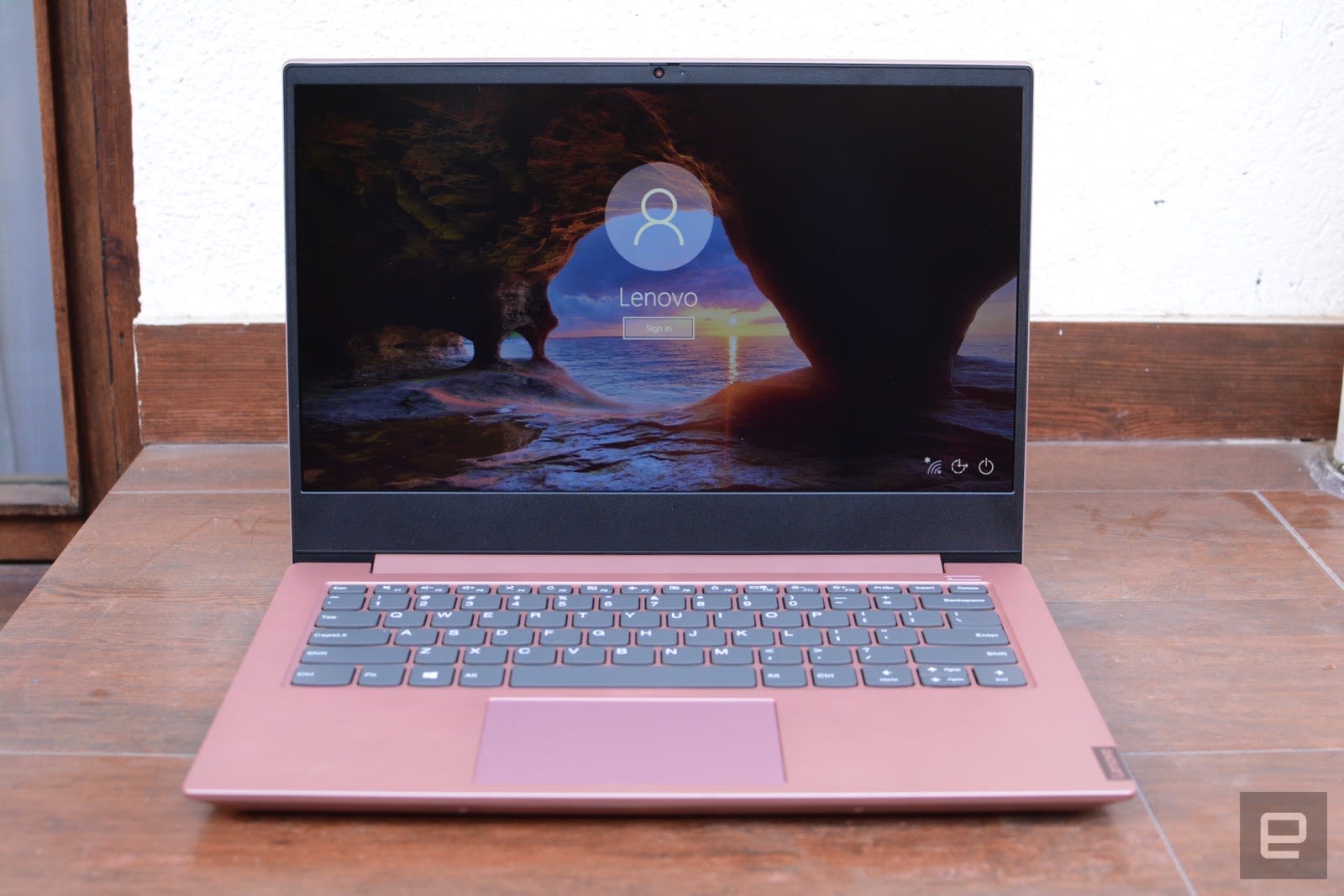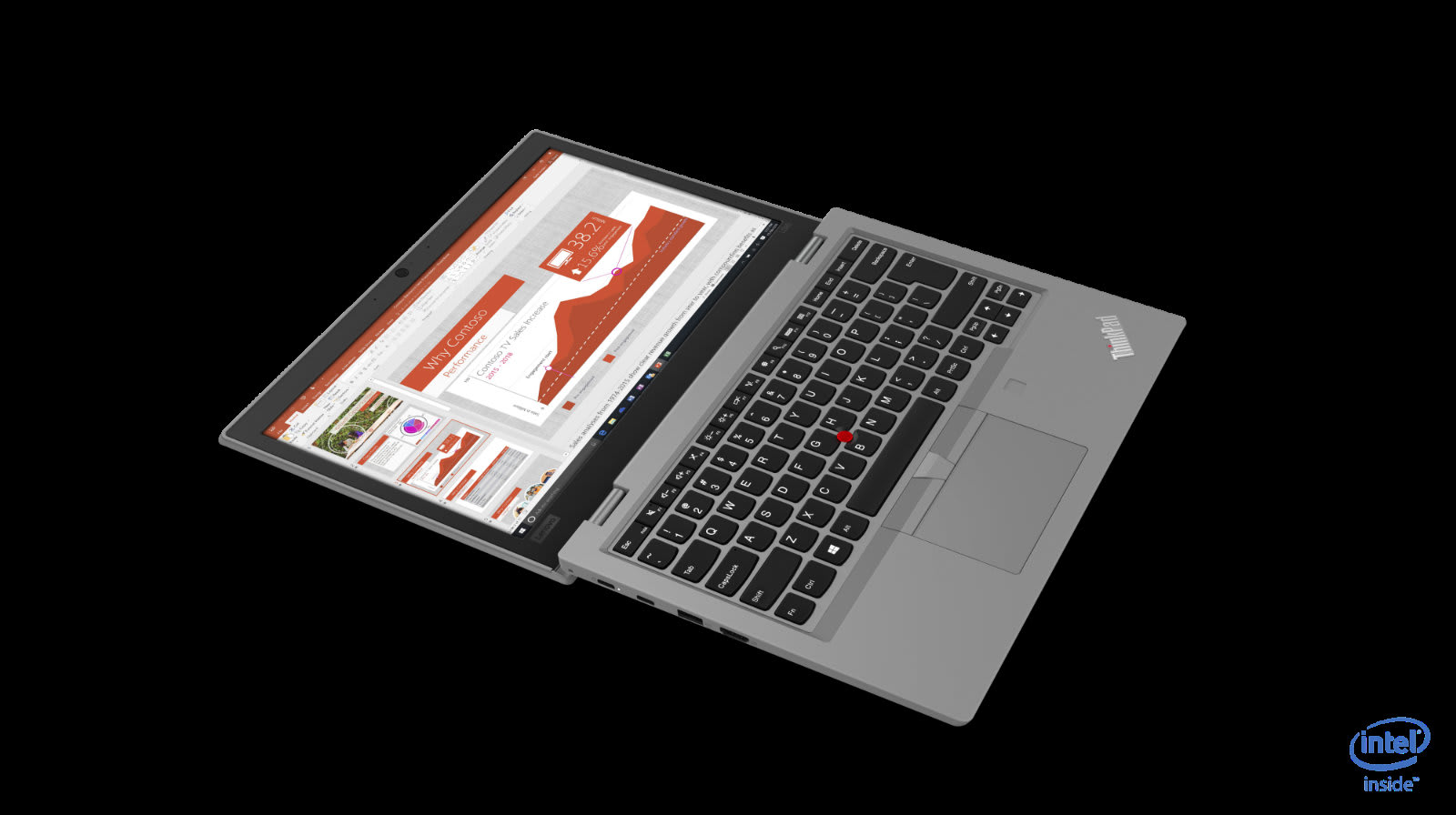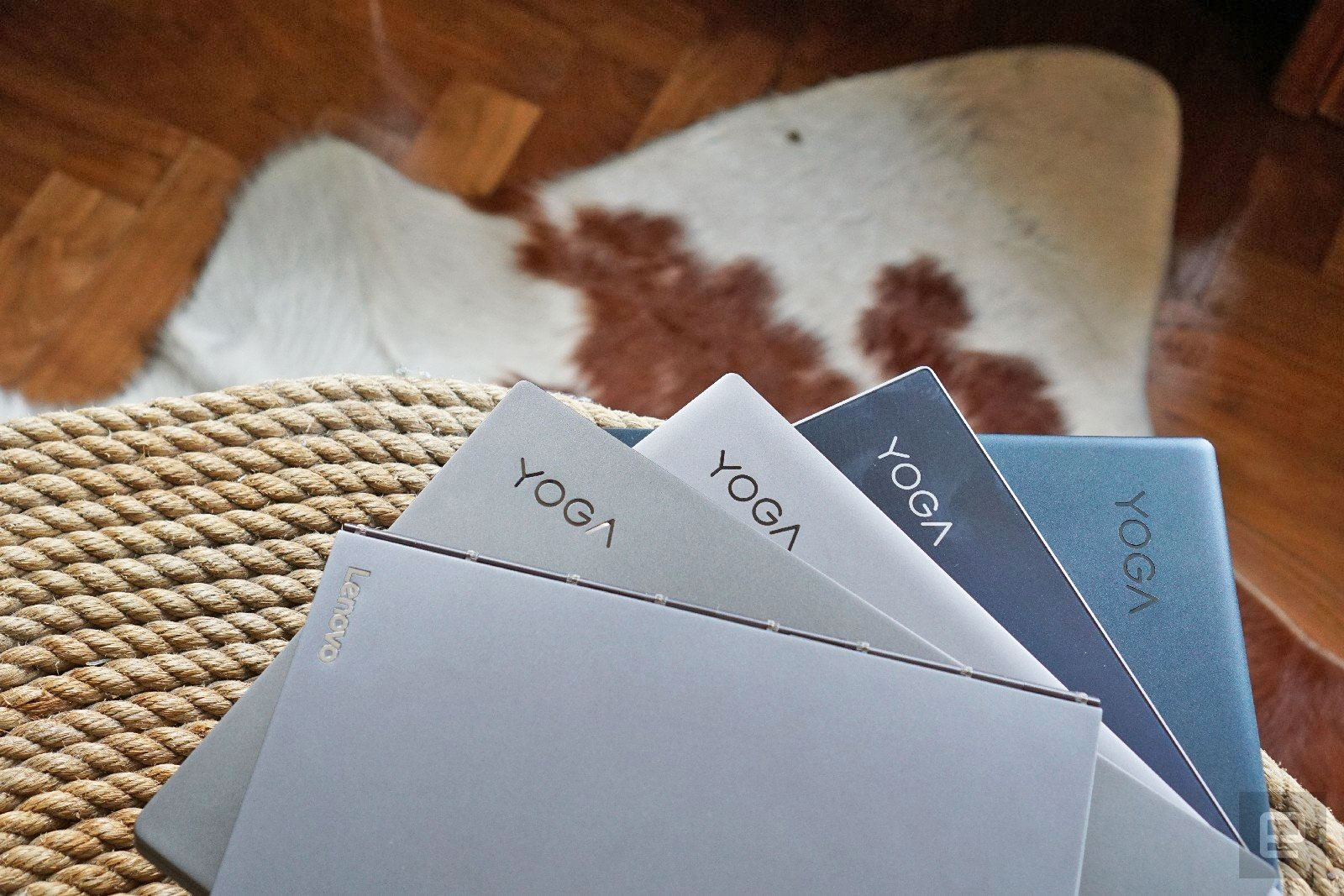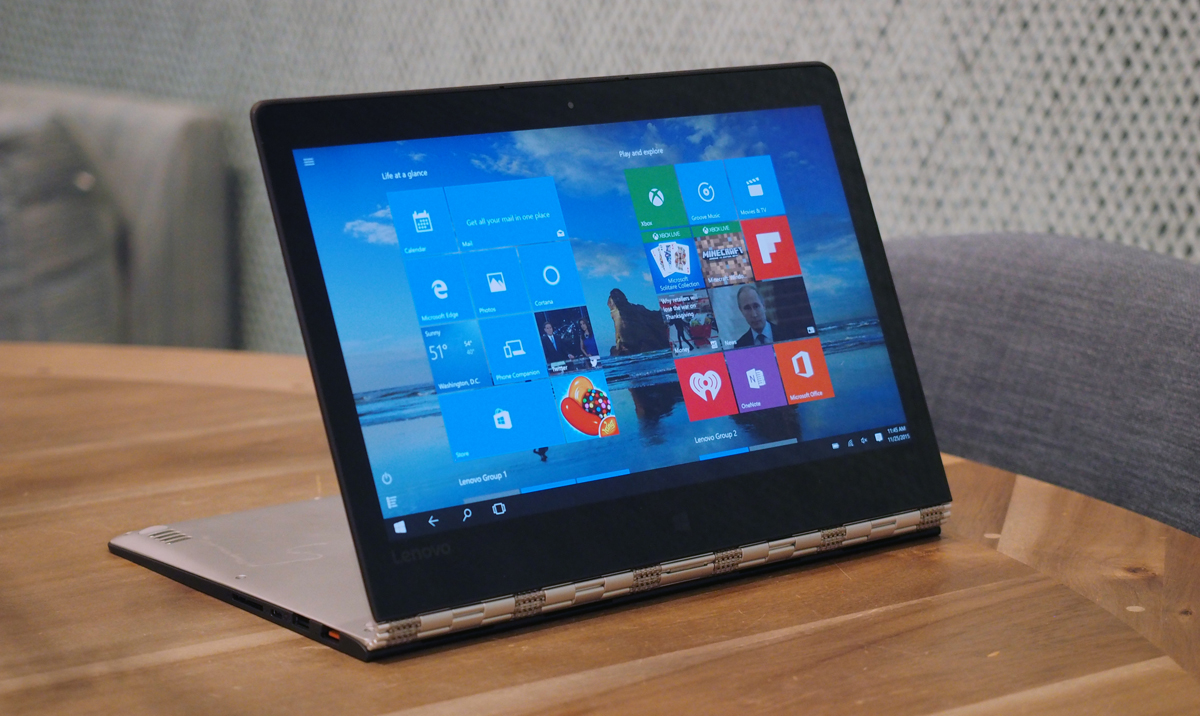
When the original Lenovo Yoga came out, everyone seemed to have the same complaint: when you flipped the screen over into tablet mode, you had to rest your hands against the keyboard on the other side. It didn't matter that the keyboard automatically disabled; it felt awkward to press your fingers into flappy keys instead of a smooth surface. Well, Lenovo seems to have taken that criticism to heart: the company just announced the ThinkPad Yoga, a 12-inch, business-friendly model with a keyboard that flattens as you flip the screen back into tablet mode. How does this so-called Lift and Lock system work? Here's the short version: as you flip the display over, a mechanical setup causes the platform between the keys to rise so that it's level with the buttons. Meanwhile, the keys get clamped in place so you can't press them. Finally, folding the screen over causes a set of feet to pop out so that there's some buffer space around the keys when you place the "tablet" face-up on a flat surface (a handy thing when you're working on grimy airplane tray).
As you can imagine, a design like this requires a reinforced hinge, along with extra space inside the chassis; for now, at least, Lenovo doesn't know how to put a keyboard like this in a super-skinny machine, which is why you're not going to find it on the new Yoga Pro, the replacement to the Yoga 13. At any rate, it's not a perfect solution -- you can still feel the individual buttons -- but at least they stay put. Also, it works much more quietly than you might expect. To be fair, our expectations were low in that regard: when Lenovo first told us it was working on a self-flattening keyboard, we envisioned a machine with a noisy motor inside, similar to the failed Acer Aspire S5. After watching a demo, though, we were impressed by how little it creaks -- and a Lenovo rep promised it would make even less noise by the time it ships.%Gallery-slideshow73559%
Filed under: Laptops, Lenovo
Comments
 Lenovo may make a lot of connected home products, but don't forget -- its core business is still PCs. At MWC 2019, the company unveiled a slew of new laptops across its Thinkpad X and T series, as well as the Ideapad family. There are also two new bu...
Lenovo may make a lot of connected home products, but don't forget -- its core business is still PCs. At MWC 2019, the company unveiled a slew of new laptops across its Thinkpad X and T series, as well as the Ideapad family. There are also two new bu...
 Lenovo may make a lot of connected home products, but don't forget -- its core business is still PCs. At MWC 2019, the company unveiled a slew of new laptops across its Thinkpad X and T series, as well as the Ideapad family. There are also two new bu...
Lenovo may make a lot of connected home products, but don't forget -- its core business is still PCs. At MWC 2019, the company unveiled a slew of new laptops across its Thinkpad X and T series, as well as the Ideapad family. There are also two new bu...
 Lenovo is updating its ThinkPad L-series lineup with two fresh laptops that won't break the bank for business users. The new entrants include the traditional notebook-style L390 and the flexible Yoga L390, which (as usual) has a hinge that lets you t...
Lenovo is updating its ThinkPad L-series lineup with two fresh laptops that won't break the bank for business users. The new entrants include the traditional notebook-style L390 and the flexible Yoga L390, which (as usual) has a hinge that lets you t...
 Lenovo makes a massive array of stuff. It's produced smart speakers, VR headsets, a Google Assistant display, tablets and phones, among other things. Within its laptops range alone, the company has five separate sub-brands: ThinkPad, IdeaPad, Yoga, L...
Lenovo makes a massive array of stuff. It's produced smart speakers, VR headsets, a Google Assistant display, tablets and phones, among other things. Within its laptops range alone, the company has five separate sub-brands: ThinkPad, IdeaPad, Yoga, L...
 Last year, Lenovo refreshed its popular Thinkpad X1 line of flagship laptops by adding a new color option, slimming down the profile and using the latest-generation Intel chipsets. This CES, the company has more substantial changes to reveal. The new...
Last year, Lenovo refreshed its popular Thinkpad X1 line of flagship laptops by adding a new color option, slimming down the profile and using the latest-generation Intel chipsets. This CES, the company has more substantial changes to reveal. The new...
 Let's face it: tablets are on the brink of death, and it's really difficult to get excited about a new slate these days. And even though tablet-laptop hybrids are taking off, that market is cornered by Surfaces and iPad Pros. So I wasn't prepared to...
Let's face it: tablets are on the brink of death, and it's really difficult to get excited about a new slate these days. And even though tablet-laptop hybrids are taking off, that market is cornered by Surfaces and iPad Pros. So I wasn't prepared to...
 Lenovo's Yoga laptops hardly need an introduction at this point: The company's iconic 2-in-1s are so popular that its competitors have been copying them right and left. Last year's edition, the Yoga 3 Pro, was especially notable for how thin and ligh...
Lenovo's Yoga laptops hardly need an introduction at this point: The company's iconic 2-in-1s are so popular that its competitors have been copying them right and left. Last year's edition, the Yoga 3 Pro, was especially notable for how thin and ligh...
 The Lenovo Yoga 3 Pro was one of our favorite laptops of 2014, but mostly for impractical reasons: At 2.62 pounds and half an inch thick, it was exceptionally thin and light, even for an ultraportable, but it suffered from relatively short battery...
The Lenovo Yoga 3 Pro was one of our favorite laptops of 2014, but mostly for impractical reasons: At 2.62 pounds and half an inch thick, it was exceptionally thin and light, even for an ultraportable, but it suffered from relatively short battery...


